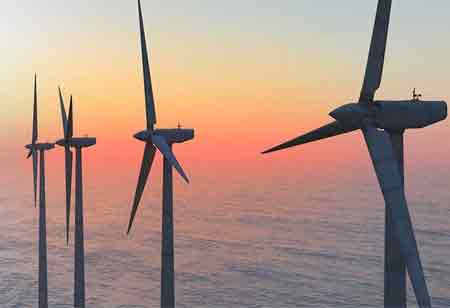Thank you for Subscribing to Energy Business Review Weekly Brief
Energy Storage for a Sustainable Europe
Europe's renewable energy penetration is increasing, necessitating energy storage technologies like lithium-ion batteries, pumped hydro, compressed air, and thermal to maintain grid stability and meet climate goals.

By
Energy Business Review | Thursday, August 22, 2024
Stay ahead of the industry with exclusive feature stories on the top companies, expert insights and the latest news delivered straight to your inbox. Subscribe today.
Europe's renewable energy penetration is increasing, necessitating energy storage technologies like lithium-ion batteries, pumped hydro, compressed air, and thermal to maintain grid stability and meet climate goals.
FREMONT, CA: As the global energy landscape transitions toward greater sustainability, energy storage technologies are becoming essential. In Europe, where renewable energy sources such as solar and wind are increasingly prevalent, energy storage solutions are pivotal in maintaining grid stability, reducing reliance on fossil fuels, and meeting ambitious climate goals.
Addressing the Intermittency Challenge
A key challenge in the widespread adoption of renewable energy is its inherent intermittency. Solar and wind power generation can vary significantly with weather conditions, creating imbalances between supply and demand. These fluctuations can disrupt grid operations and undermine energy security without adequate storage.
Energy storage systems play a vital role in modern energy infrastructure by acting as buffers that allow excess renewable energy to be stored during periods of high generation and released when generation is low or during peak demand. This functionality provides several key benefits. Primarily, energy storage helps balance supply and demand by aligning energy production with consumption, ensuring a more stable and reliable grid. Additionally, these systems can reduce reliance on fossil fuel-based power plants by storing renewable energy, thereby cutting greenhouse gas emissions and air pollution. They also enhance grid flexibility by offering ancillary services such as frequency regulation and voltage control, which improve overall grid stability and resilience. Furthermore, energy storage can alleviate peak demand by storing energy during off-peak hours and discharging it during peak periods, which reduces grid congestion and the necessity for new power plants.
In Europe, various energy storage technologies are in use, each with unique advantages and limitations. Lithium-ion batteries are the most commonly deployed due to their high energy density, rapid charging and discharging capabilities, and relatively long lifespan. Pumped hydro storage (PHS) involves storing energy by pumping water to an elevated reservoir and releasing it to generate electricity when needed. While PHS offers large-scale storage capacity, it requires specific geographic conditions. Compressed air energy storage (CAES) stores energy by compressing air and then using the compressed air to drive turbines. CAES is practical for long-duration storage but depends on particular geological conditions. Thermal energy storage (TES) retains energy as heat or cold, which can be used for electricity generation or heating and cooling. TES is particularly suited for integrating renewable energy sources such as solar thermal and geothermal.
Europe has emerged as a leader in energy storage development, evidenced by the increasing deployment of large-scale projects across the continent. Governments and utilities are making substantial investments in energy storage infrastructure to facilitate the integration of renewable energy and bolster grid resilience.
As the penetration of renewable energy in Europe rises, the demand for energy storage solutions is anticipated to grow markedly. Innovations in battery technology, alongside decreasing costs, render energy storage more competitive and accessible. Additionally, the evolution of hybrid energy storage systems, which integrate various technologies, shows promise in meeting the diverse needs of different applications.
Energy storage is essential to Europe's transition towards a sustainable energy future. By supporting the efficient integration of renewable energy, reducing dependence on fossil fuels, and enhancing grid stability, energy storage technologies are crucial in shaping a cleaner, more resilient, and sustainable energy landscape.






